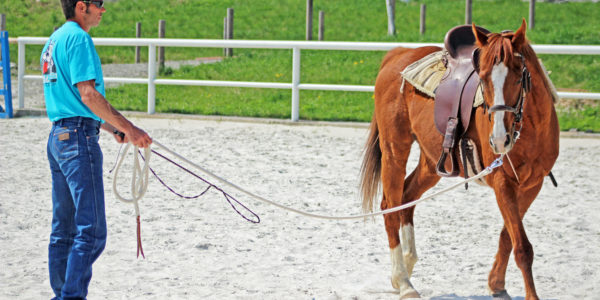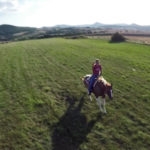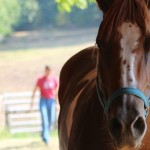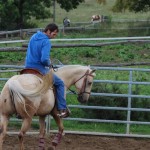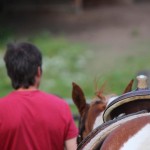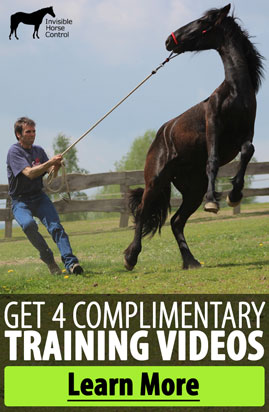Getting your horse ready to be started is an extremely important time in his life. It can decide about how he is going to be under saddle when you actually start riding on him. If you prepare well, your horse is not going to have any negative signs against having a saddle and a rider on his back or a bit in his mouth.
If you don’t start your horse well, if you don’t do things correctly, the behaviour of your horse can be negatively impacted for his whole life. Or at least it will be very difficult to fix.
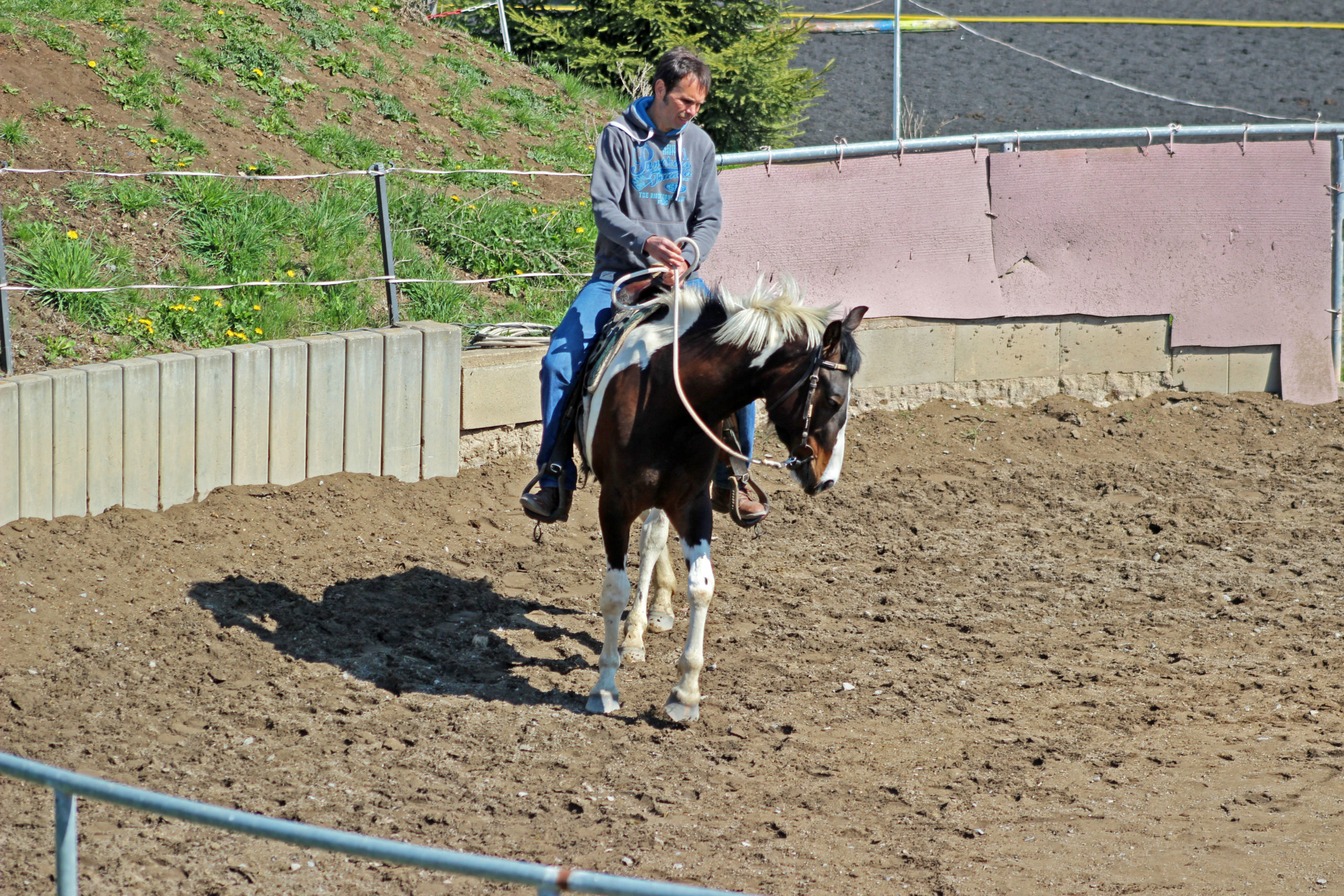
If your horse gets stressed with having a rider on his back when you are trying to start him and starts bucking for example, trying to shake the rider off, you will be able to solve the situation. However, your horse will never really forget it. The impact of the initial stress he had with a rider on his back will stay in his mind forever.
So it is really important to have the correct approach when you start a horse.
1st step – Getting the absolute basics down from the ground

I start preparing my horse to be started in a roundpen. First I work with him in walk.
Then I start practising trot and canter on a long lead rope.
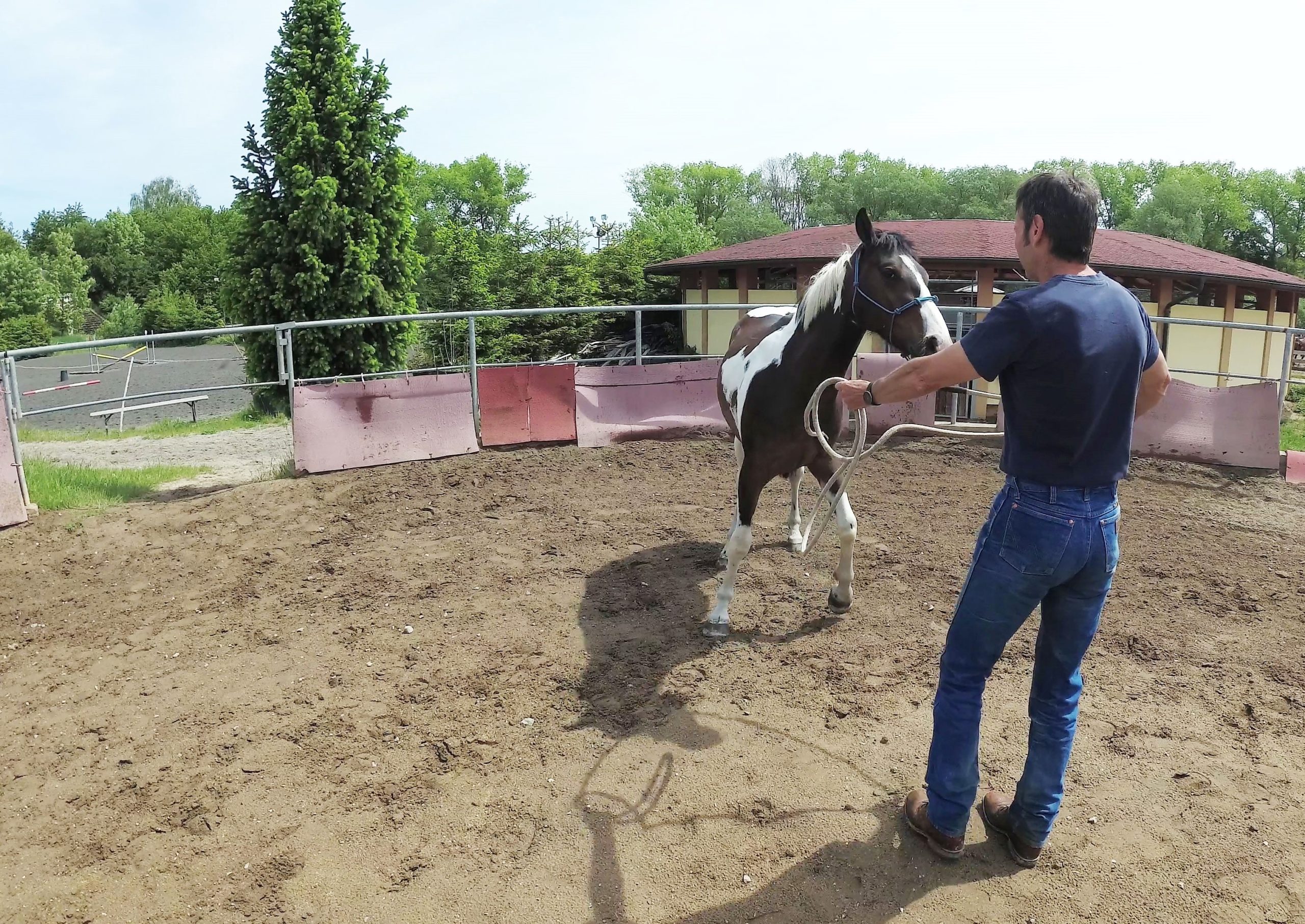
I also free lunge my horse before starting them. I practice change of direction in the roundpen. In all gaits. While free lunging, but also on a long lead rope.
2nd step – Would you like to be able to stop?
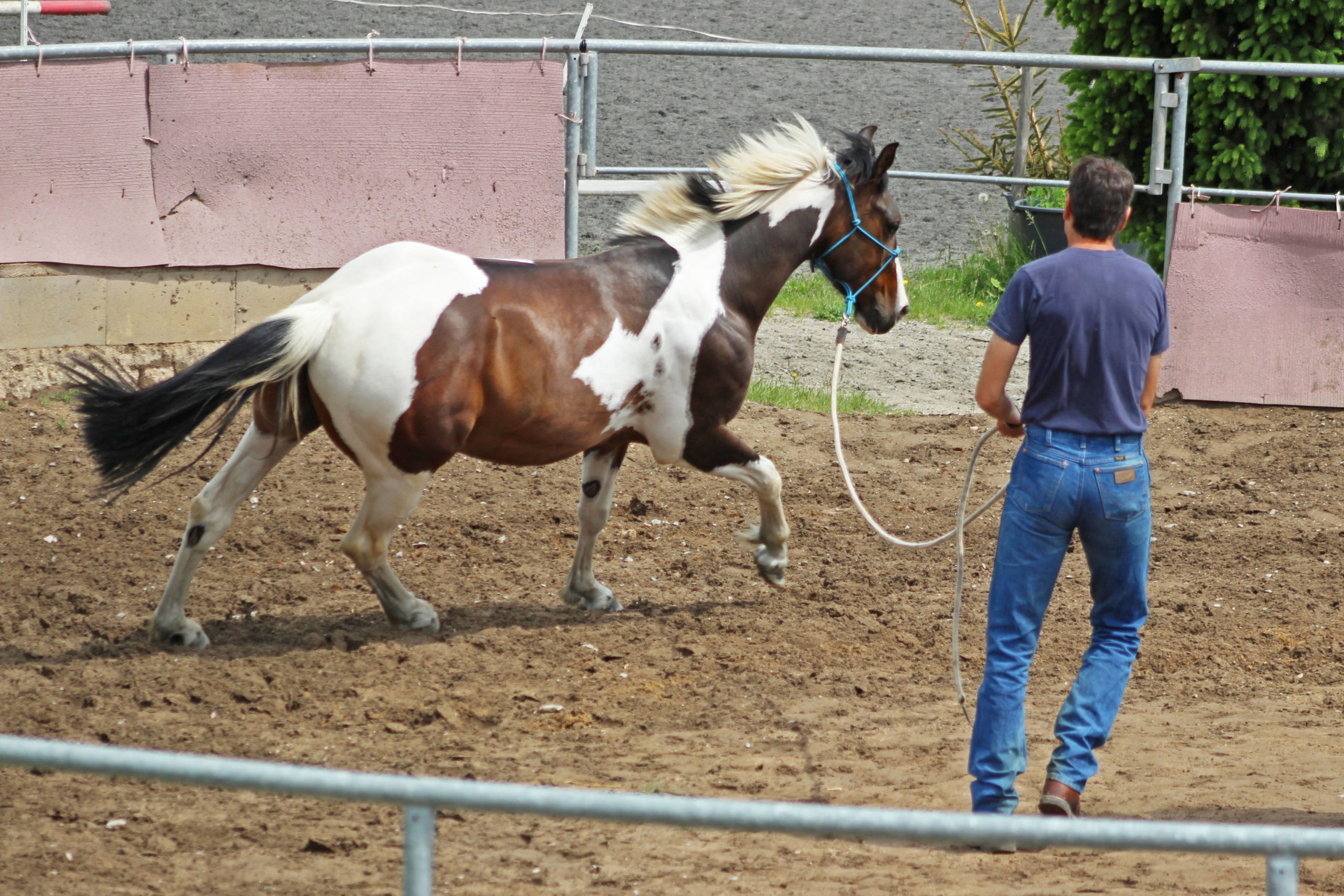
After my horse can do the change of direction well enough, I start practising speed control. I want to be able to switch between gaits easily. I start practising stopping and slowing down. I keep practising until my horse remains calm at all times and reacts quickly and willingly.
3rd step – Understanding the pressure from the bit
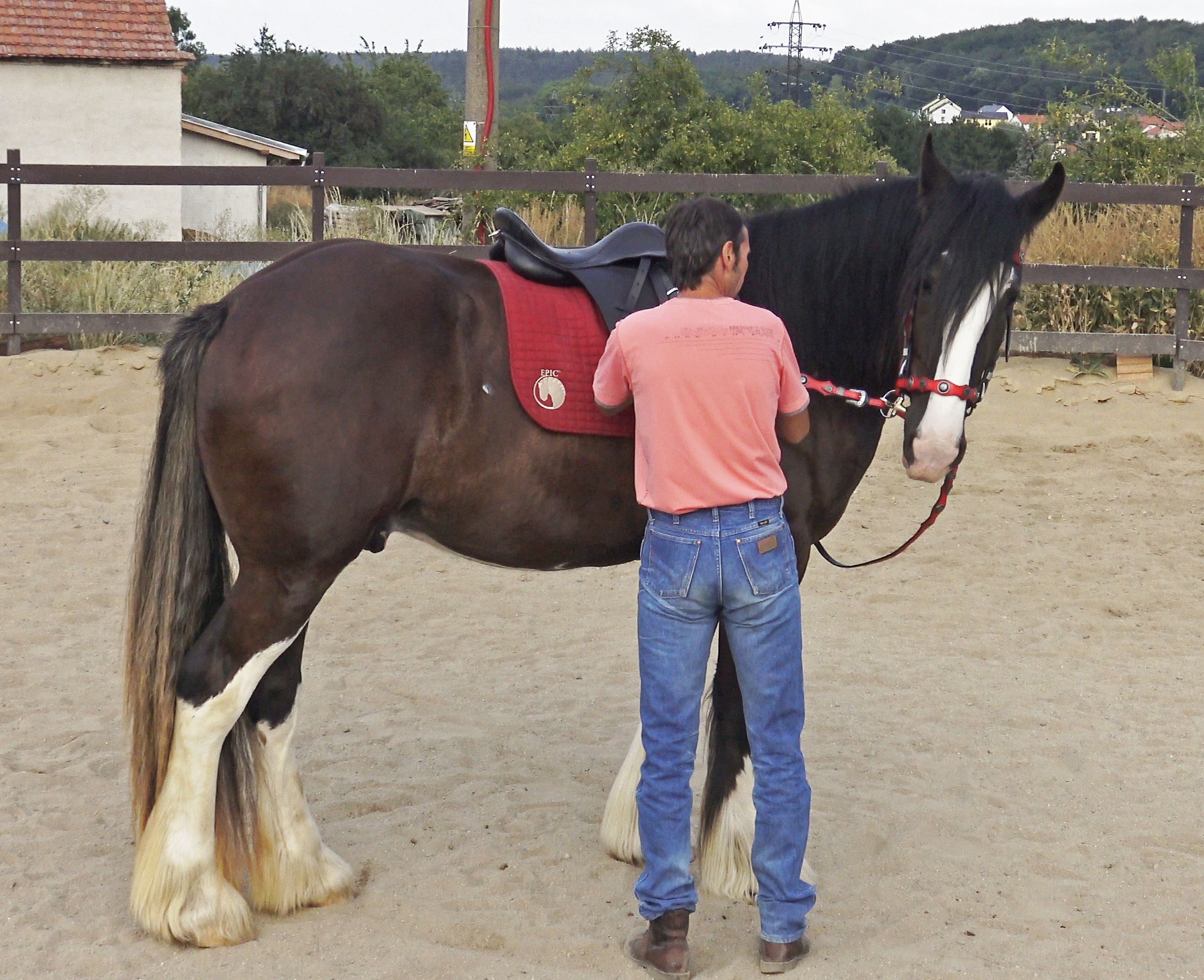
After that, comes the next stage in which I want my horse to get used to the bit. I get my horse to stand still with a bit in his mouth. Then I gently pull on a single rein, asking my horse to turn his head to the side. Moving away from the pressure.
4th step – Understanding riding aids before you ever mount in the saddle
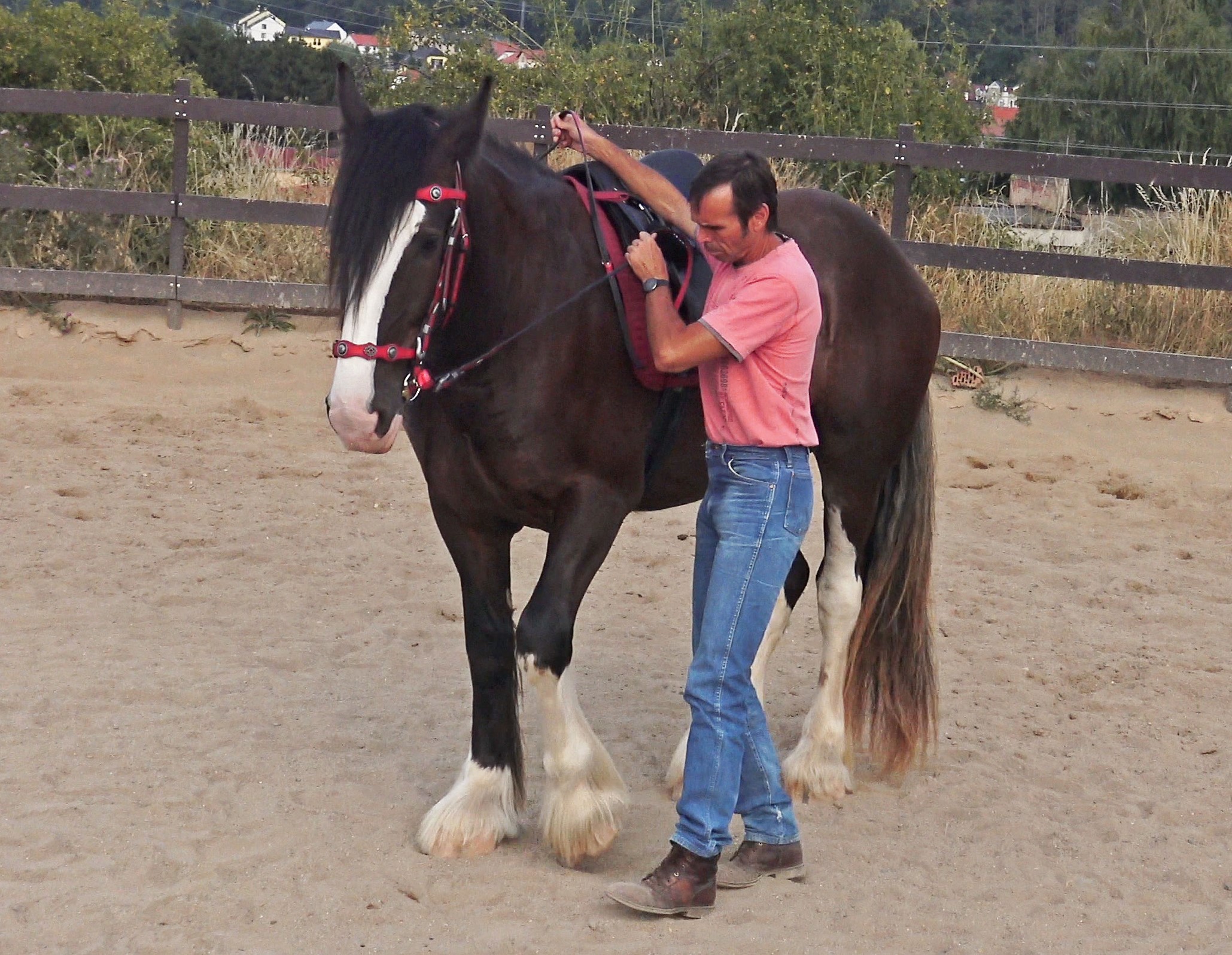
After I can do that, I move on to the next step. I stand next to my horse’s front legs, I grab both of the reins on each side of my horses neck and I start gently and gradually pulling on them. My aim is to get my horse to back up, two to three steps. Gently start pulling, and only release the pressure after your horse starts backing up.
I keep practising over time until my horse reacts quickly and willingly on very low pressure.
The point of practising turning your horses head and backing up by pulling the reins from the ground is that once you mount in the saddle, your horse will already be familiar with what each type of pressure means and he will be familiar with how to react. Once you get in the saddle your horse will have many new things going on, and being completely familiar with these types of pressures and how to react on them will make it a whole lot easier and much less stressful.
5th step – Saddle up!
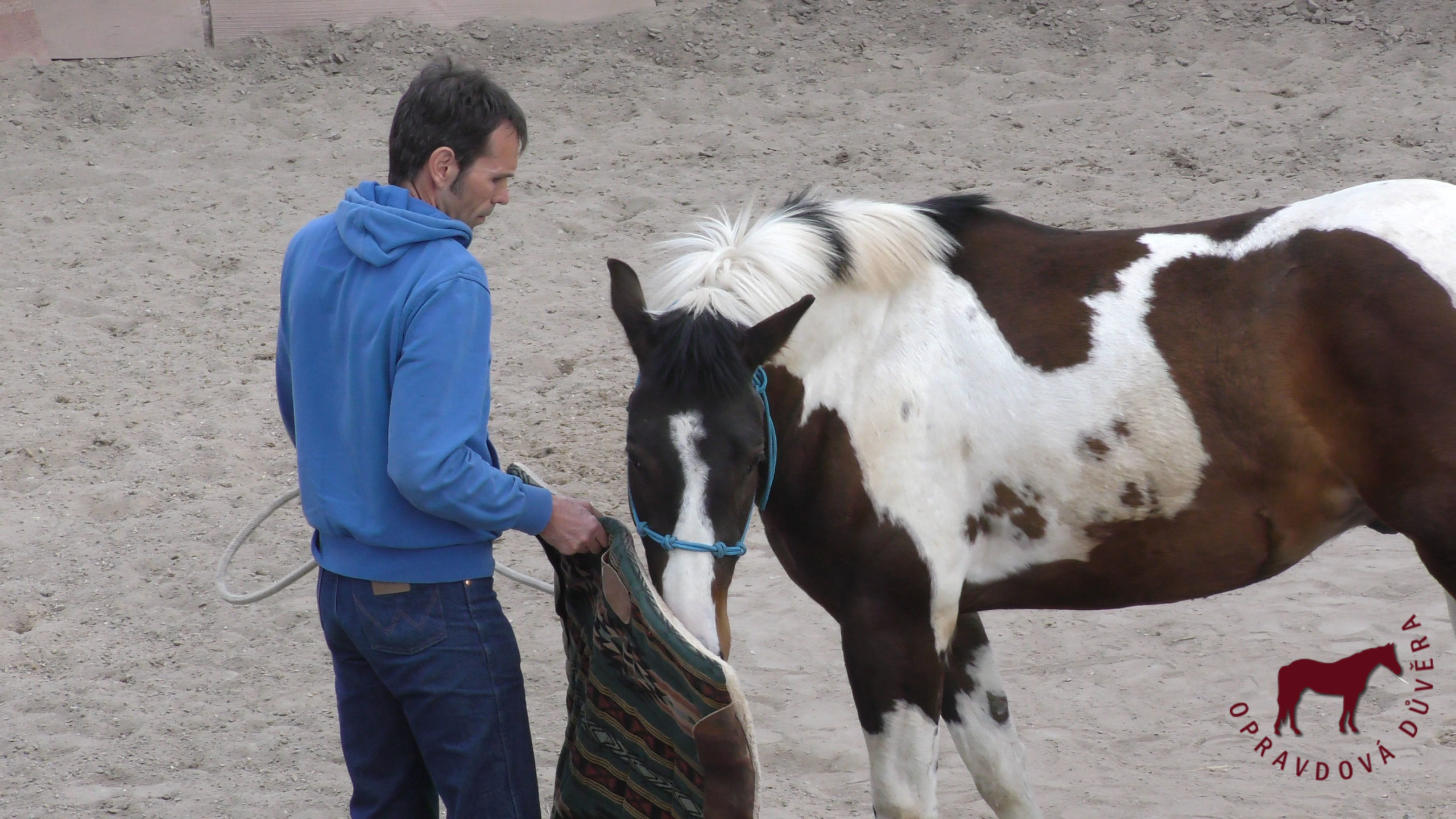
After my horse gets familiar with the bit and how to react on its pressure from the ground, I can try to put the saddle pad on his back. In the beginning, I am going to be extremely gentle and slow. The key is to be moving very slowly and put the pad on your horses back very gently.
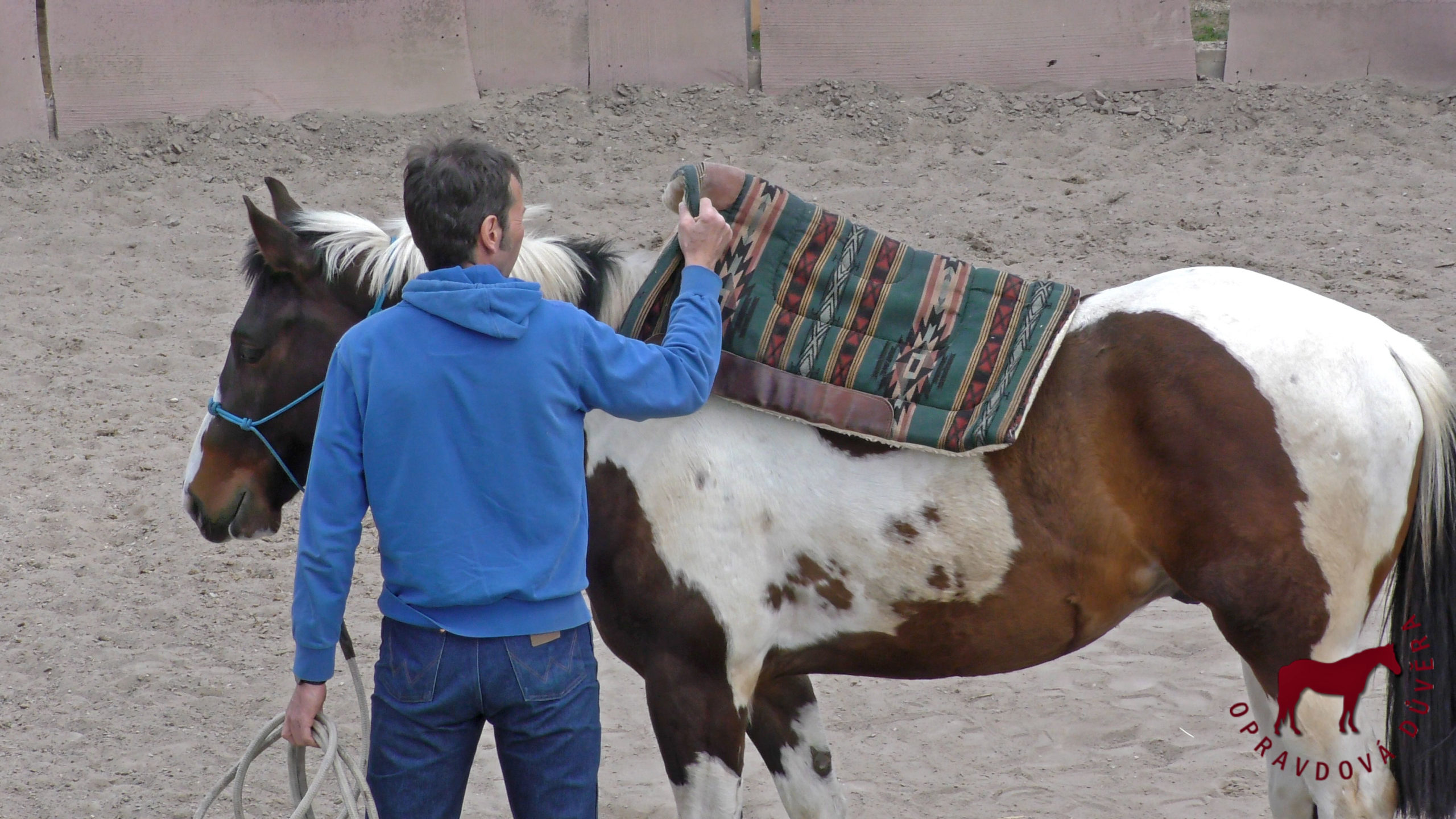
If everything is ok, you can gently take it off, and just repeat the process. Put it on and take it off until your horse stops caring about it. Over time you can be less and less careful and gentle about the way you put it on.
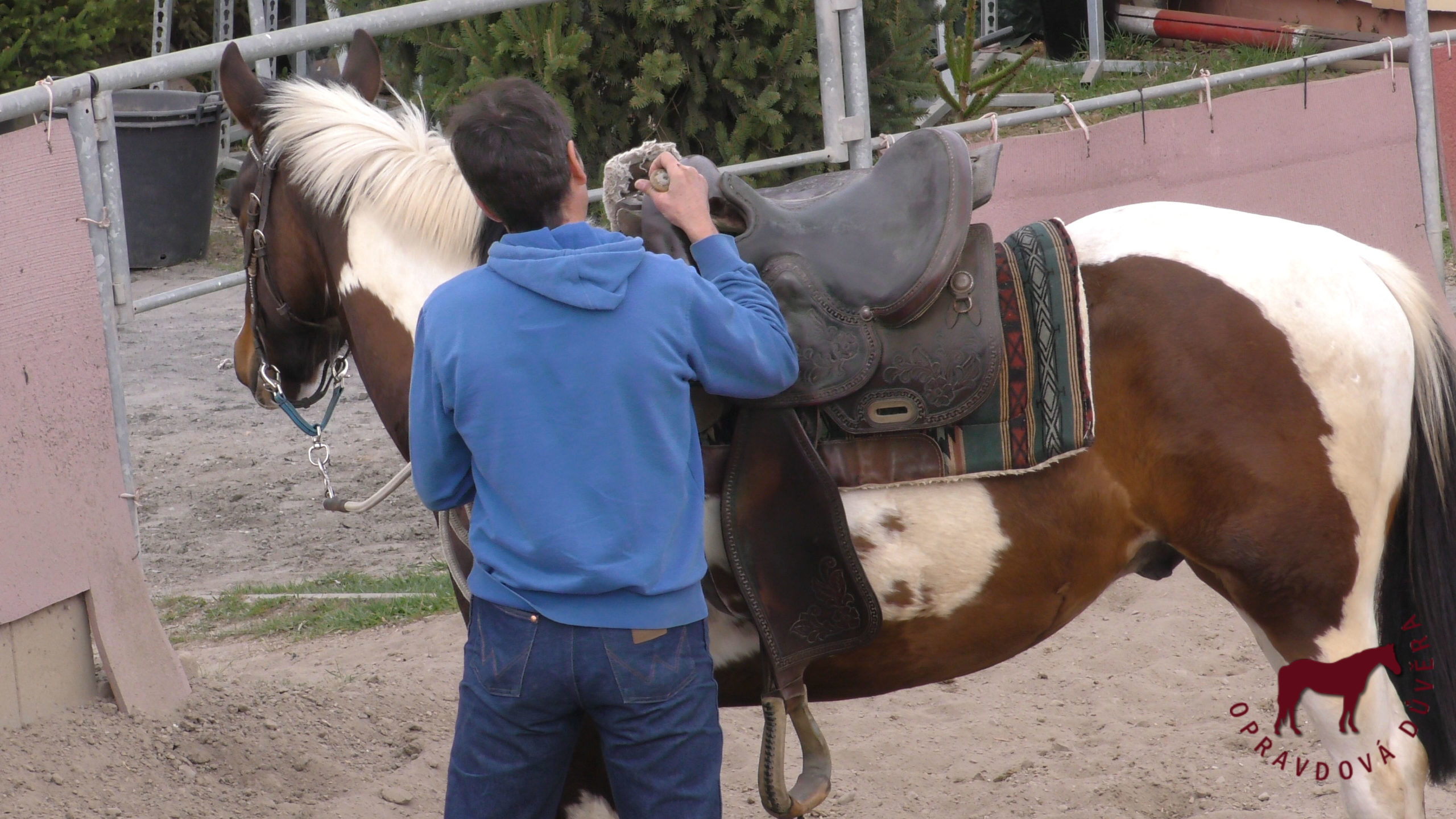
After your horse gets familiar with the saddle pad, you can try to put the saddle on.
Get your horse to stand still in the middle of the roundpen on a long lead rope. He is going to be much more relaxed with you putting the saddle on if he knows that he is not tied to anything.
If you get your horse tied to something as you practice putting the saddle on, he will know he cannot run and will be much more stressed about the situation. Just like with the saddle pad, I keep putting the saddle on and taking it off again, until I see that my horse doesnt care about it at all.
6th step – Tighten up the cinch!
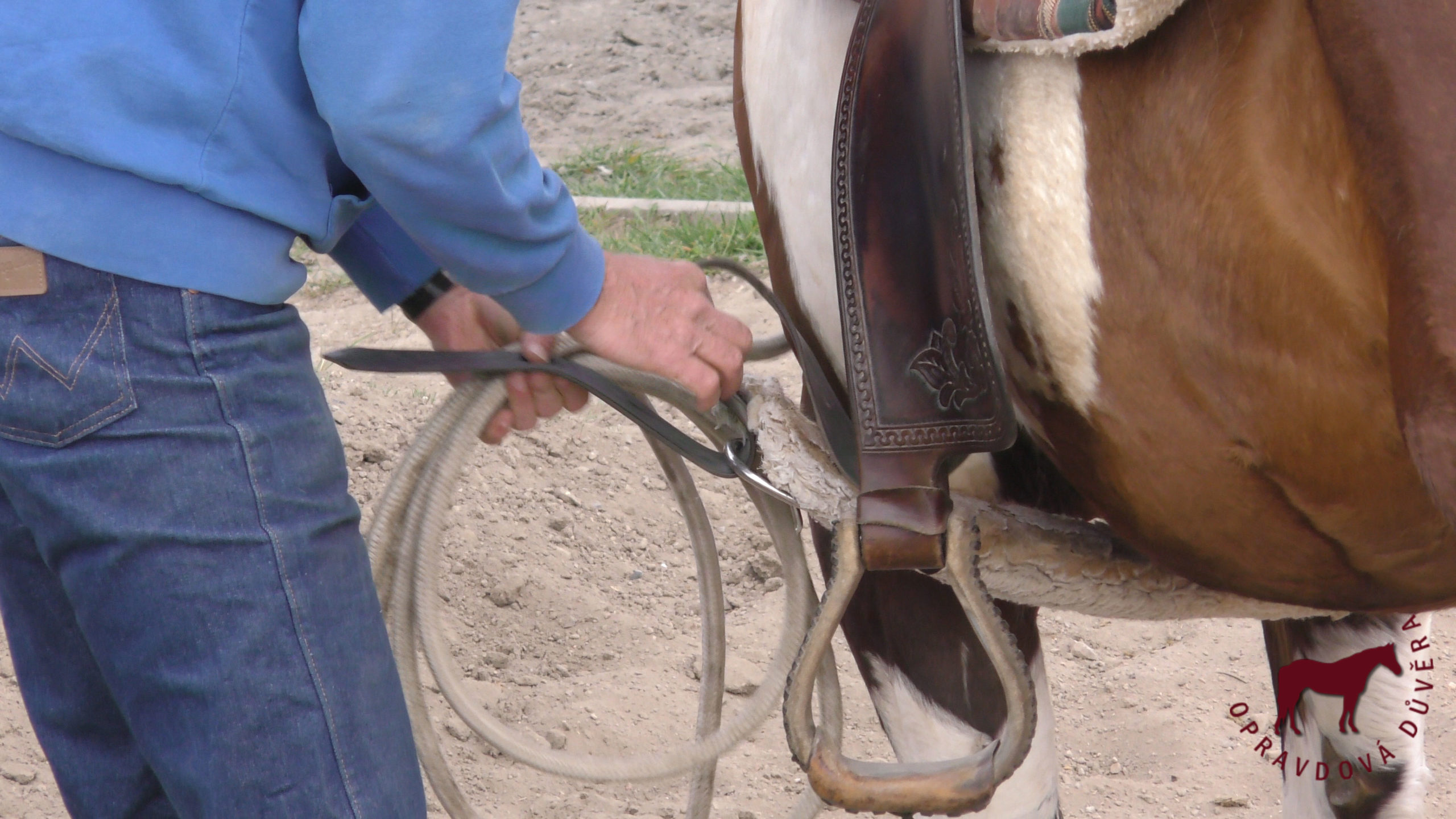
After my horse is ok with the saddle being placed on his back, I start trying to gently tighten the cinch. Aproach tightening the cinch just like you did the two previous steps.
7th step – Your horse might get scared during this step…
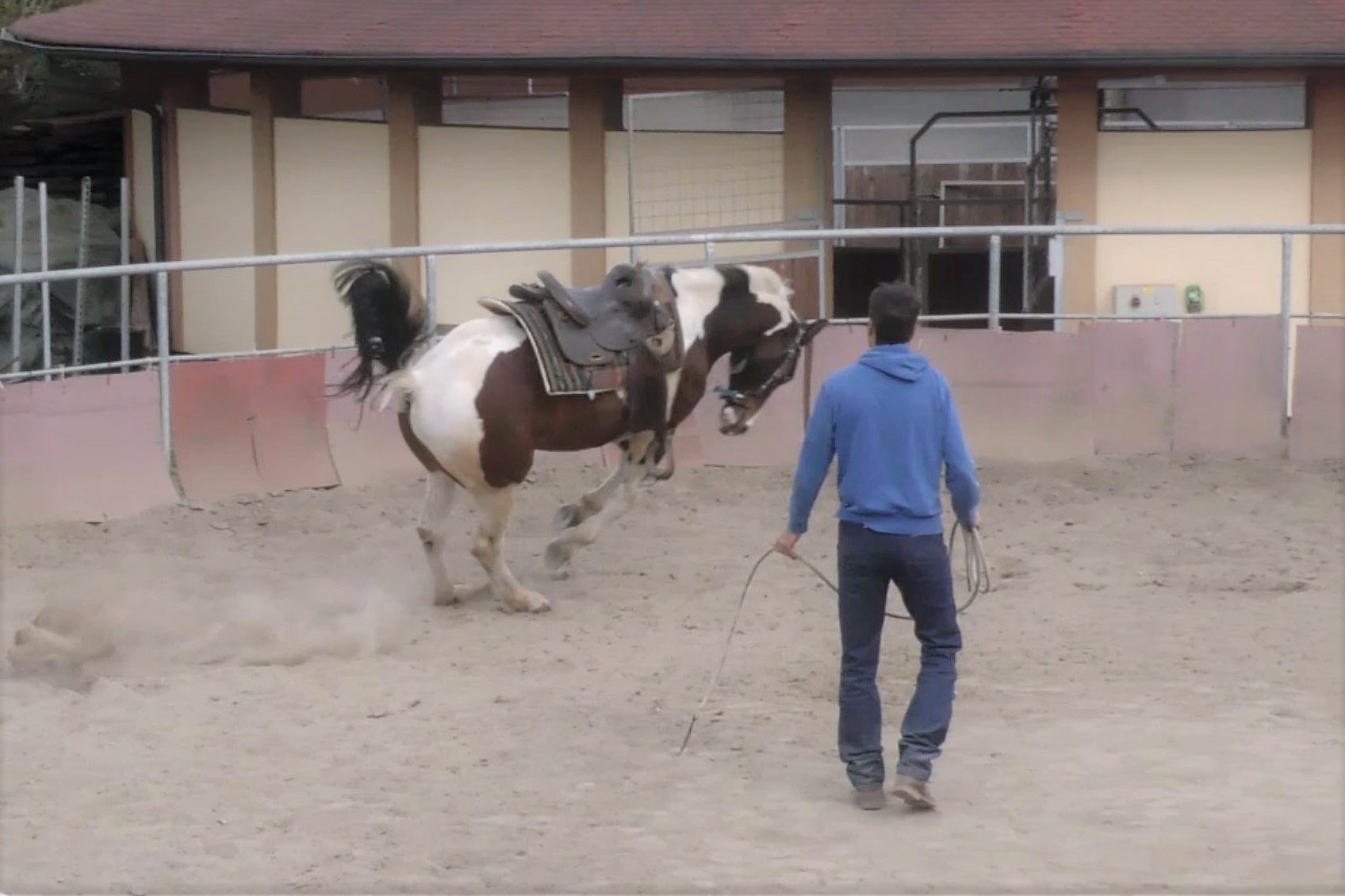
Once you get your cinch tied enough and your horse is ok with it, you can ask him to go around the roundpen with the saddle on his back. He needs to get used to moving with it. This is the moment when a lot of horses will get scared and start bucking. They get scared by the saddle moving and not coming off.
Just let your horse trot around on a circle, change direction often enough. Keep working with your horse until he gets comfortable with the saddle on his back.
8th step – Make sure your horse is going to remain calm when you attempt to mount for the first time.
Then, perhaps most exciting part comes. You can start getting your horse ready to be mounted.
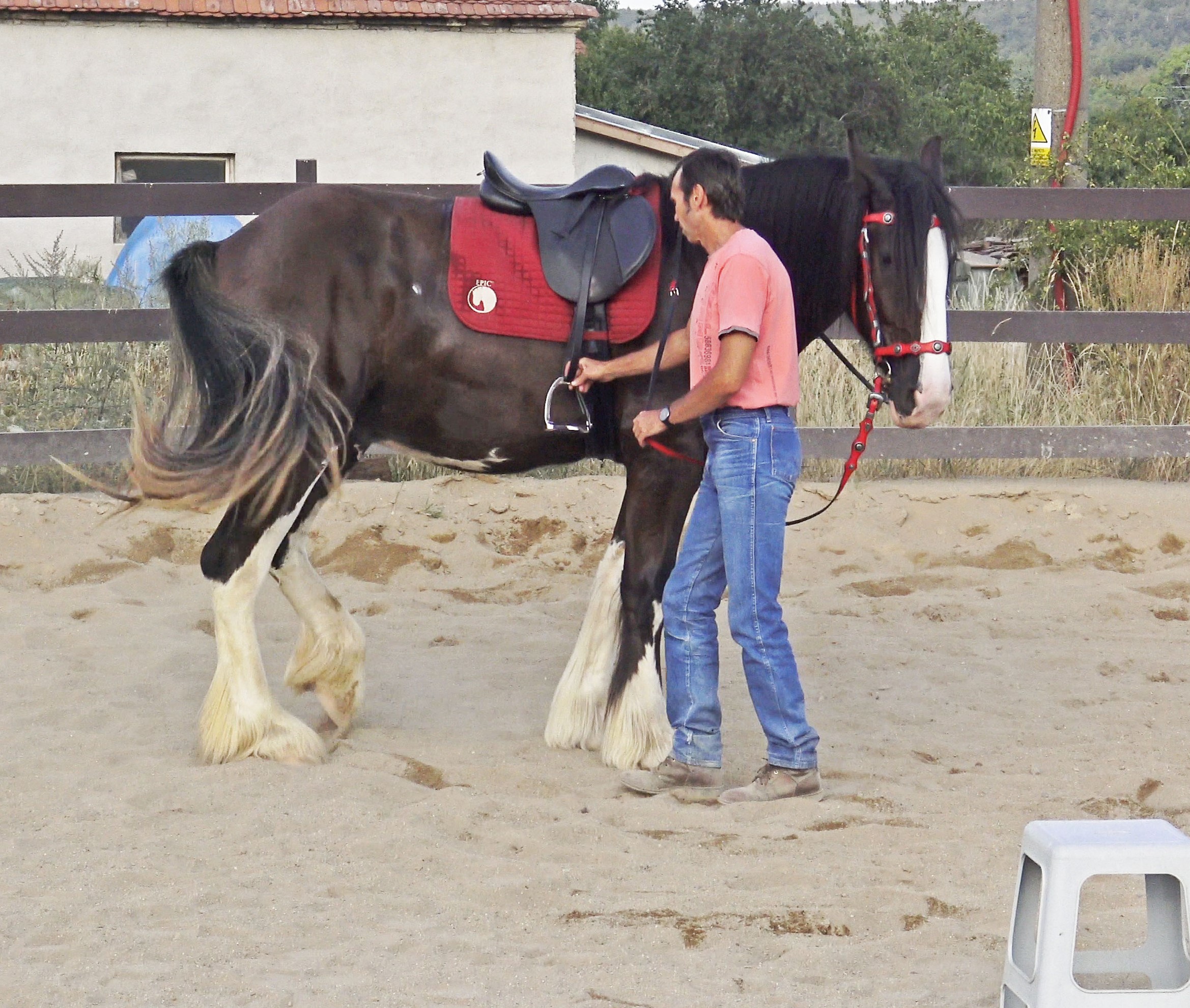
Start by grabbing the stirups and touching your horse with them. Keep doing it until your horse gets completely calm about it and just stands still.
It is important to get him used to the stirups moving around and touching him while he is standing still, because you dont want him to just bolt when you try to mount for the first time.
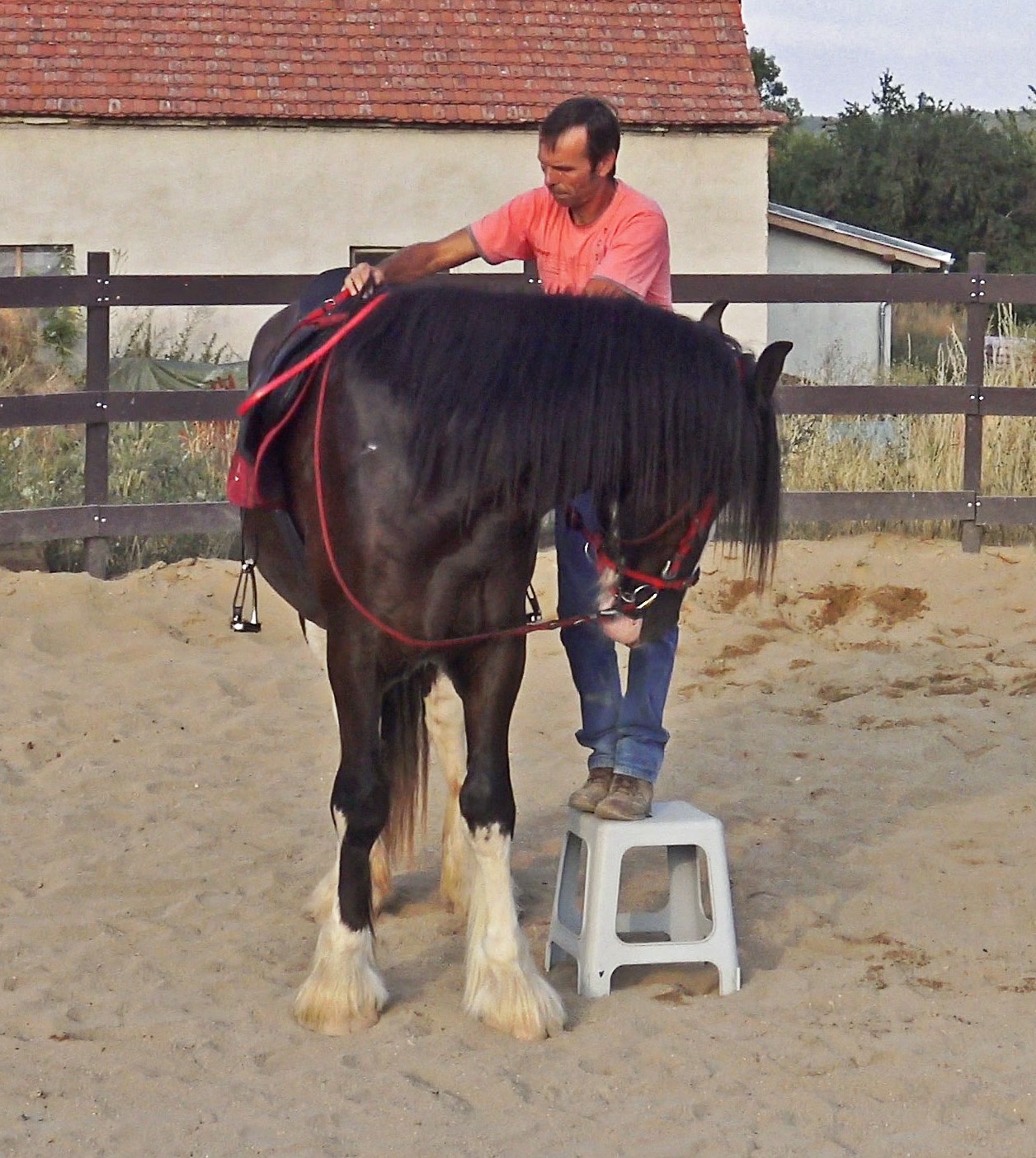
After that, the next step is to get a bucket or something you can stand on. Place the bucket next to your horse and stand on top of it. The point of that is for your horse to get used to seeing you on top of him other than just standing next to him.
You do not want your horse to get scared of the fact that you are on top of him when you try to mount for the first time.
9th step – Put your weight into it

The next step is to get your horse used to weight in the stirrups. I start by putting pressure in the stirrup using my hands. If that is ok, you can put your feet into it.
Then just continue putting more and more weight into it. Practice that from both sides of the horse until he gest completely familiar with it and calms down.
10th step – It’s time to finally stand up
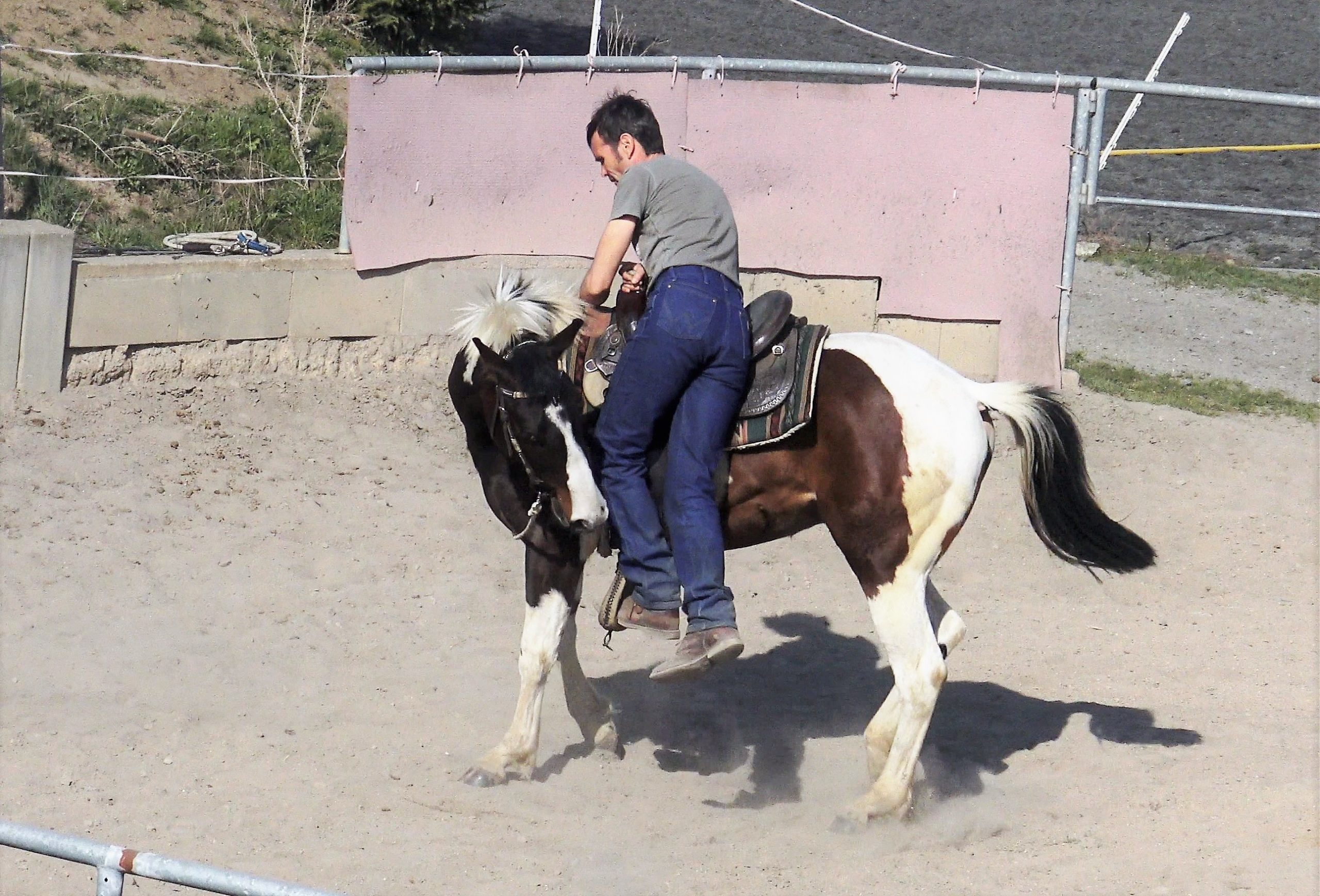
Then, you can finally slowly try to stand up in the stirrup. I put one of my feet in the stirrup and slowly stand up leaning over my horse. I do the same thing from both sides.
When I try this for the first time, I always keep pulling on one of the reins to keep my horses head turned to the side. That way he is not going to be able to bolt and suddenly start going forward. He will be more likely to just start walking slowly on a very small circle.
11th step – Mounting

After you are able to stand up in the stirrup on both sides of you horse and he is comfortable with it, you can try to actually mount in the saddle for the first time. Be very careful when you put your other leg over your horse. Do it slowly and be careful.
12th step – Baby steps
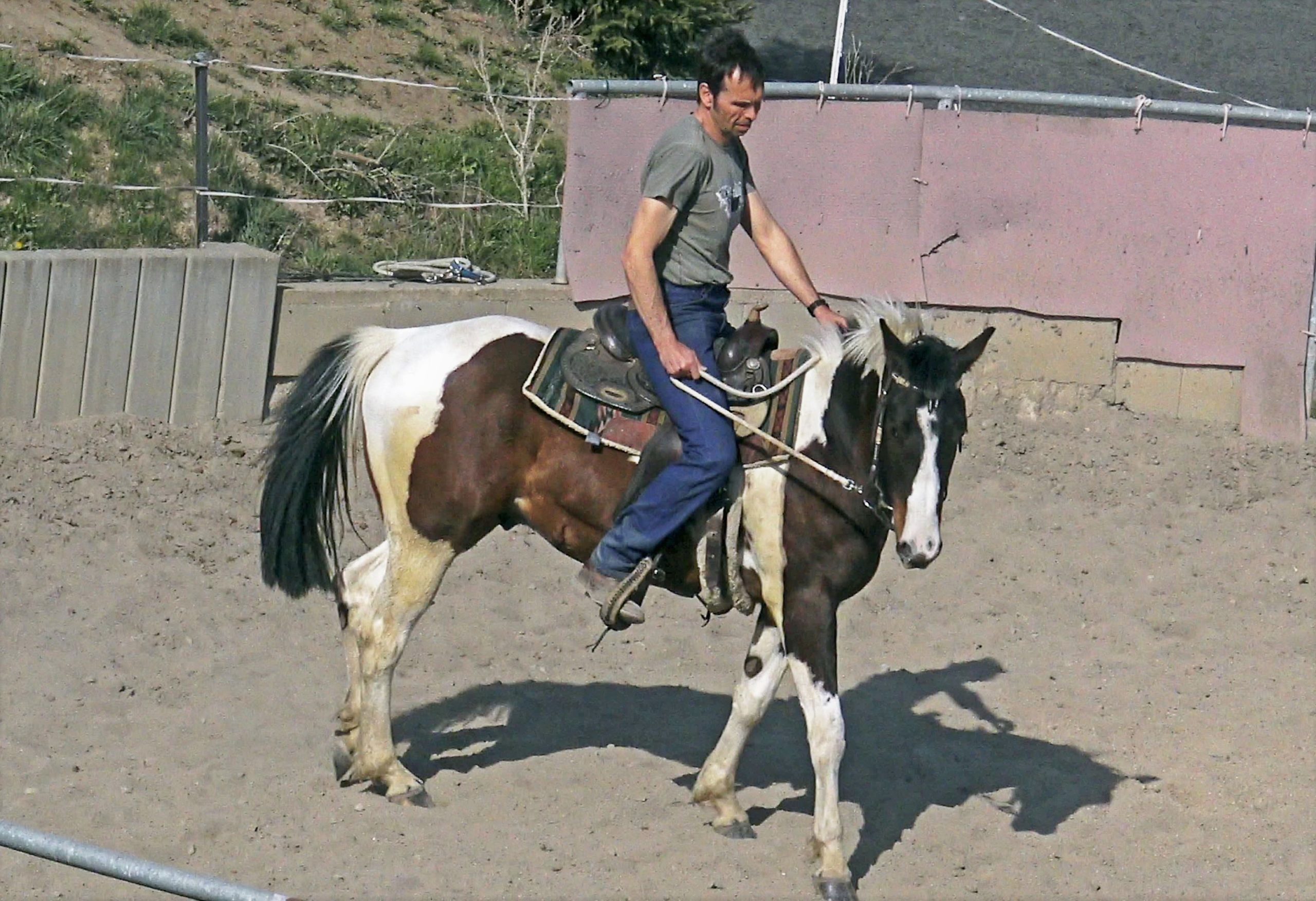
After you sit down in the saddle, just try to get your horse stand still calmly. Keep his head turned to the side during the whole process. After you can see that he is calm for at least a few minutes, you can gently tap him with your legs to ask him to start moving forward.
Keep holding his head turned to the side. You should gently tap your horse with your legs until he starts walking. As soon as he starts walking, stop tapping him. Because you should still be holding his head to the side, your horse should just walk on a small circle.
If your horse stops walking start urging him to walk by gently tapping him with your legs again. You want to do at least two to three circles. If you see that everything is fine, you can start letting him to put his head straight and make the circle bigger.
Are you ready?
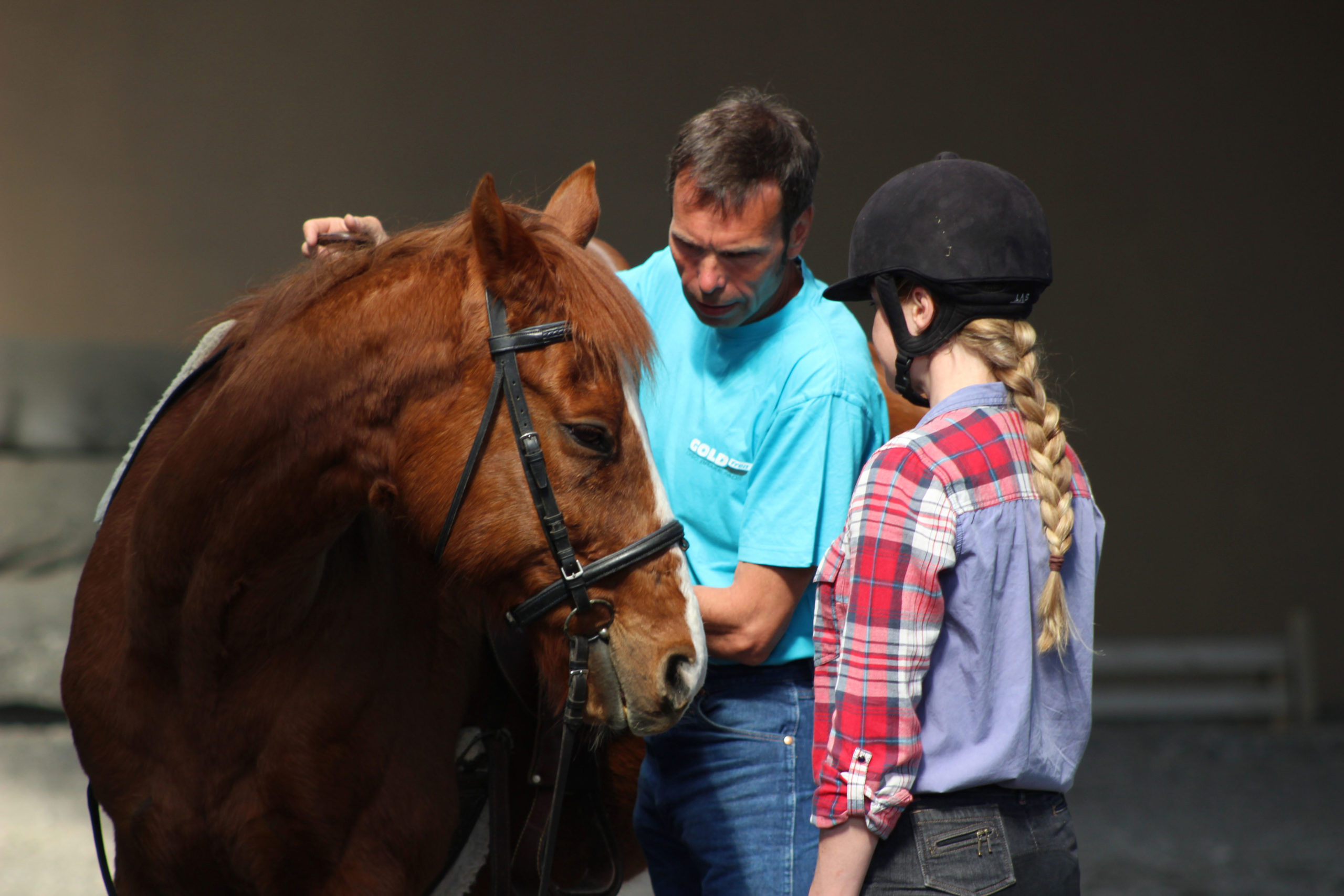
Sometimes everything goes very fast, sometimes it doesn’t. However, if you do things right most horses are going to be just fine with the process of getting them started.
However, each horse is different, you will always have to adjust during the process based on how your horse reacts. Never rush things. Always make sure that your horse is completely comfortable with each step before you move on to the next. Even when everything goes well, never try to skip a step or rush things.
Remain calm at all times. If you get scared, your horse will get scared.
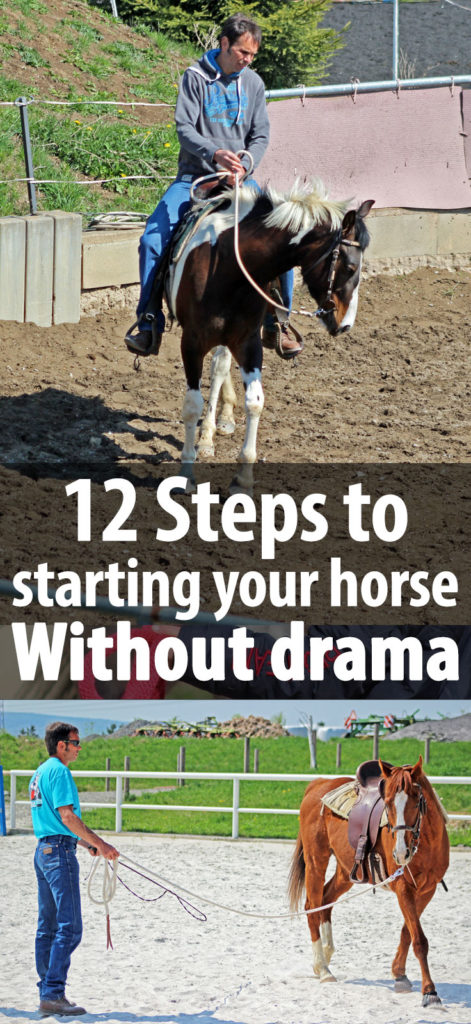
Pin this article on your Pinterest!
Starting a horse is a wonderful experience, however, if you are not sure you would know how to react or you just don’t feel confident and comfortable with attempting it, it is always better to leave it to someone experienced.
Trial and error is something that will get you into a lot of trouble while starting a horse. You have to know the correct steps and how to perform them.
If you want to start your own horse, or if you are going to get your horse started by a trainer, I am also preparing a live class where you can actually see it all in action.
Take a look at the free live class by clicking here
